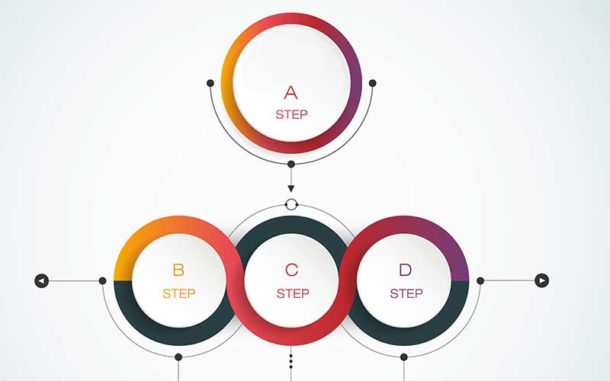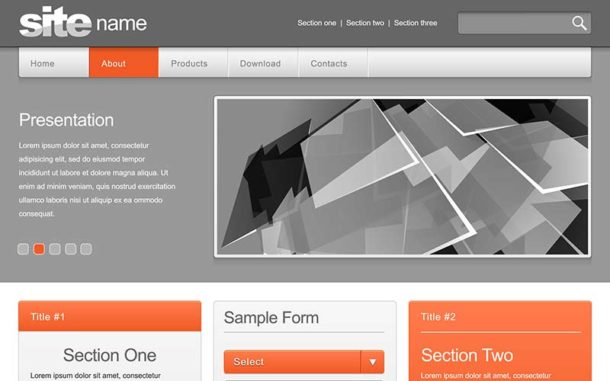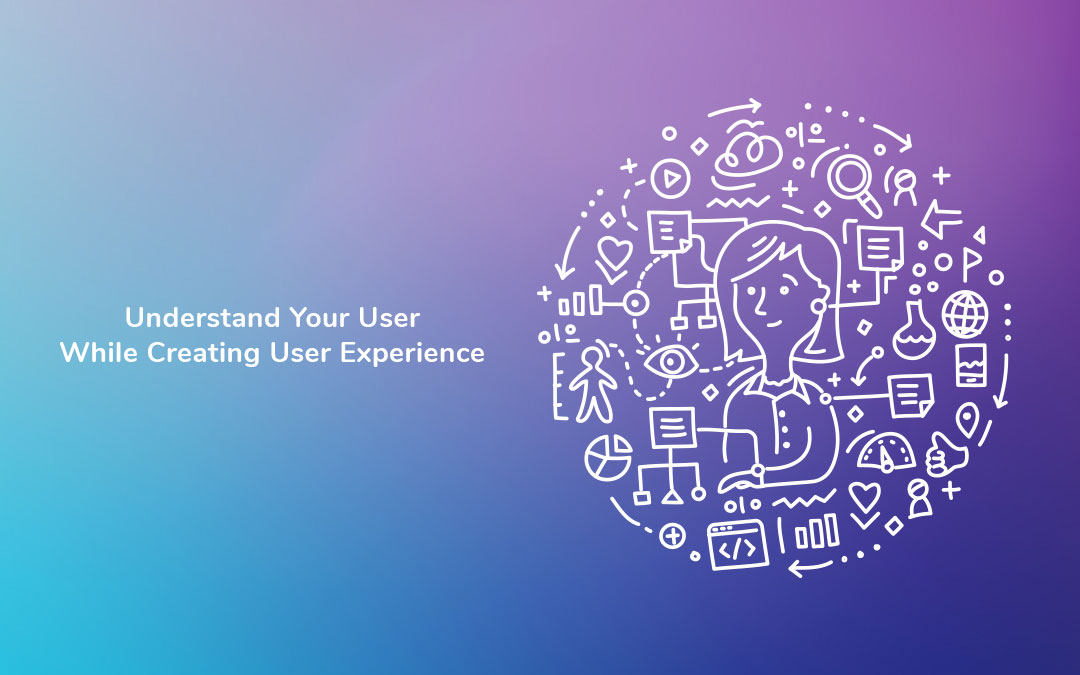It is the users who make user experience. For a user experience to be powerful, you must fully understand your users. And by that, we don’t mean just knowing who they are, but also all about their needs, motivations, values, behavior and even limitations. In fact, understanding people, users, in particular, is a skill UX designer ought to have. You might be thinking that this is pretty obvious. But actually, it is easier said than done.
The reason is- every user is different when it comes to thinking and perspective. So, here the big challenge lies in managing the expectations of the users. With an empathetic view on the mindsets, UX designers should be rigorous in understanding the needs before proposing a dynamic solution to their problems.

A UX designer has to strike the right balance both between the business needs and user needs. Along with the glory of long-term and short-term goals in business, users get to achieve their goals that too in an interactive manner. The best way for any UX designer to improve user experience and to enhance engagement is by devising web design through the lens of an actual user. The fallacy that users match the thoughts and perceptions of the designers can cost the UX professionals big time.
In sum, user-centric design rules when it comes to user experience. So, the best of UX practices are the ones that focus on enhancing the quality of the user’s interaction with that of your product or any relative services. In this post, we will give you an insight into the mindsets of users that will help the budding UX designers to flourish in their career-
1. The First Glance

Most users don’t have the time and patience to explore the entire website. They will not make that extra effort to explore hidden functionalities and surprise features. Only what is visible and clear will catch their attention in the first go. So, make sure to display all the important stuff conspicuously so that the users lay their eyes on the information instantly.
2. Lack of Attention

With online sources flooding information, users tend to get swayed and jump from one website to the other, all in the search of info that they are seeking. Agreed that the content and the information are major scorers but remember presentation is the key when it comes to engagement.
3. Off With Complaints
Let’s say, a user caught a bug or flaw in your website. Now what? He will register a complaint. If you think so, forget it. Users are more prone to bounce off your sites rather than registering complaints and then waiting for the solution to turn up. So as to keep the bounce rates low, keep regular quality assurance tests to make sure that your website delivers effective performance.
4. Just Enough

You won’t find many users who are keen to know about the detailed set of functionality and features given in your website. Most of them are just interested to know the stuff that is required to complete the task at hand. Make sure that the functions and features of your website are not dependent on each other, are easy to navigate and don’t cause any issues as such.
5. Be Familiar

Users are mostly driven by intuition and rely on their prior knowledge to perform any action. There are certain navigational flows and web design practices that are used all across the web. It is better if you stick to these as users are happy to take charge, you start experimenting and that is where the users will be baffled and will try to make a quick move.
6. Solution Wins
If a user gives your website a chance, it simply means he is looking for some solution or an answer to some problem that he encountered. And if they don’t get fruitful results of their search, they will just leave your website and enter the zone of your competitors. Make note that your website is nowhere lacking is useful content and can be accessed by the users for the purpose of their help.
7. Usage Struggle
It is seen that most of the users under the fear of being labeled ‘slow’, give false feedback about how easy and intuitive the website is in its performance. But the reality is that they have to struggle a lot with the complex systems and it is way beyond their esteem to ask for help. Just be careful that ample help is available for their rescue.
8. Usage Patterns
Even though you are engulfed by some set notions as to how to explore the web and follow a typical flow on the website, but remember your users may not always follow that path that you have predicted for them. Be ready for users who aren’t fixed in their path and follow a zigzag pattern across your website.
9. Time Tab

Now, users don’t have forever to browse on your website. As per research, 40% of visitors leave a website if it consumes more than 3 seconds to load. Also, 47% people go for websites that take 2 seconds or less. To top it all, your site load performance and page loading time should be optimized to keep the users still on the page.
10. Tired With Text
Due to the poor attention span of users, you can’t expect them to read everything that is written right from the top till the bottom. They don’t like the lengthy body of texts and sometimes no texts at all. Try using graphical elements wherever you can to condense the amount of content that is used in your website or add-on to text for better and quick understanding.
11. Useful Always
Users are always in favor of websites that are forever useful. Nothing can make him happier than coming across a website that offers a solution to his problem quickly. Go for regular updates of your websites to keep it useful and helpful for the users, just as the way they want it.
Below are some ways in which you can understand your users better:-
1. User Interviews

As understanding the thoughts and the behavior of the users is a cumbersome task, user interviews are one such medium that will reveal the beliefs and opinions of users very well. Construct insightful customer questions so as to interpret what all they are expecting from the products of your brand. Let the leading questions be effective so that you don’t get trapped in the cycle of business and get to the wrong path altogether.
2. Contextual Interviews
In these interviews, researchers observe as users work in their usual environment as against being in a lab. These type of interviews are more natural and even more realistic to drive the outcome. They are not that formal as lab tests are and also don’t use any tasks or scripts as such. Here you watch and listen as the user performs the action.
User tasks and scenarios are not usually given. To comprehend the thoughts and behavior of a user, you can put questions as the user navigates across the website. The outcome is often qualitative, noticed data rather than quantitative, calculative data.
3. Matter of First Click
First click testing determines what a user will click first on the interface so as to get the task completed. This can be done on a functioning website, wireframe or a prototype. Web sites that deliver high on performance generally take users’ tasks into consideration straight away. First click testing is good to measure the efficiency of the linking structure of your site along with the navigation to assess if the users can move around the site comfortably and complete the task successfully.
4. Focus Groups

In a focus group, around 5 to 10 participants are taking part in a moderated discussion. A focus group can throw light on users’ beliefs, attitudes, desires, and reactions. Being a traditional market research technique, focus groups are more preferred in marketing departments as against usability testing and contextual interviews. As the participants talk they reveal everything about their experiences or expectations. Here you cannot verify or observe these experiences as such.
5. Survey Speaks
An online survey consists of a structured questionnaire that your target audience is supposed to complete over the internet by way of filling a form. The surveys are different in their length and format. The data is securely saved in a database and the survey tool helps to give some analysis along with a review of a trained expert.
These surveys are wider in scope as they give information from a wide set of audience at a very little cost. Here you can learn who all are the users, what all are their goals and what sort of info do they want.
6. Task Analysis
In this method, you get to learn about ordinary users just by observing them in action to know the intricate details about their performance and all about their intended goals. It puts forth the tasks that your website and application must recognize and also aid in improving or redesigning your site’s navigation or search by taking into consideration the actual content scope.
Here you will know everything about your user goals, the targets that they want to achieve, the actions are undertaken to achieve these goals, the experiences that matter and the effect of the physical environment.
7. Test of Usability

This means to assess a product or service by testing it with its allotted users. During the test, participants fulfill the tasks whereas observers watch, listen and jot down notes. The aim is to recognize any usability problems that are troubling the users, record qualitative and quantitative data and measure the user’s satisfaction with the product.
Usability testing has three stages – developing a tough test plan, recruiting participants and finally, analyzing and reporting your findings. The best part of usability testing is that here you can get hold of problems even before they are coded. And the earlier issues are recognized, the less will be the costs of solutions.
End Note
Your website is not just for anyone and everyone. You must know your target audience- your users. A skilled UX designer is the one who will narrow down the target and try to know who all he is catering to. It is important to communicate so as to identify the goals that the users are trying to achieve in their life and work. An effective solution can only be crafted if you know the objectives well. Never forget; a product is not meant for you, but for your users. If you fail to understand them, you fail as a designer.



